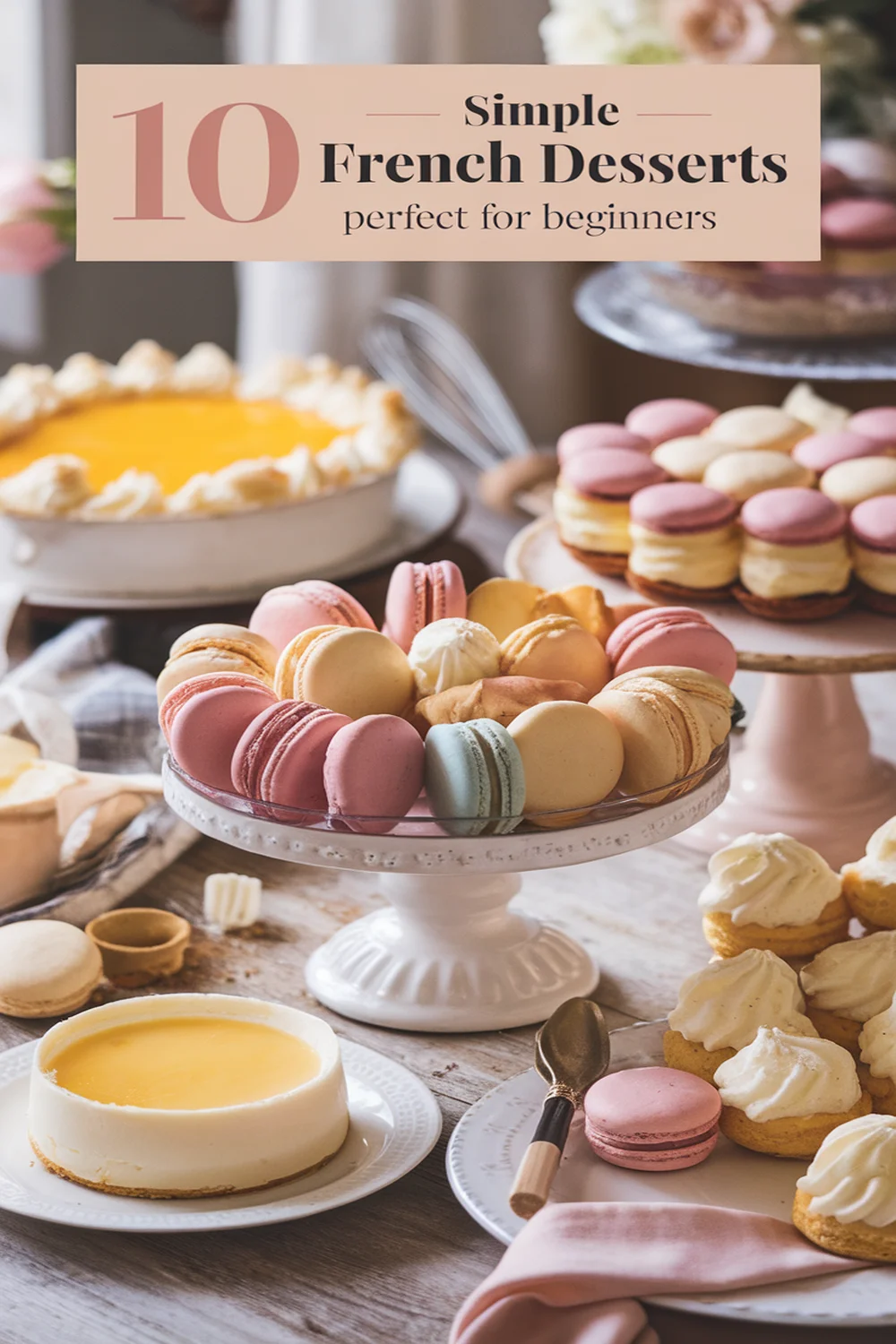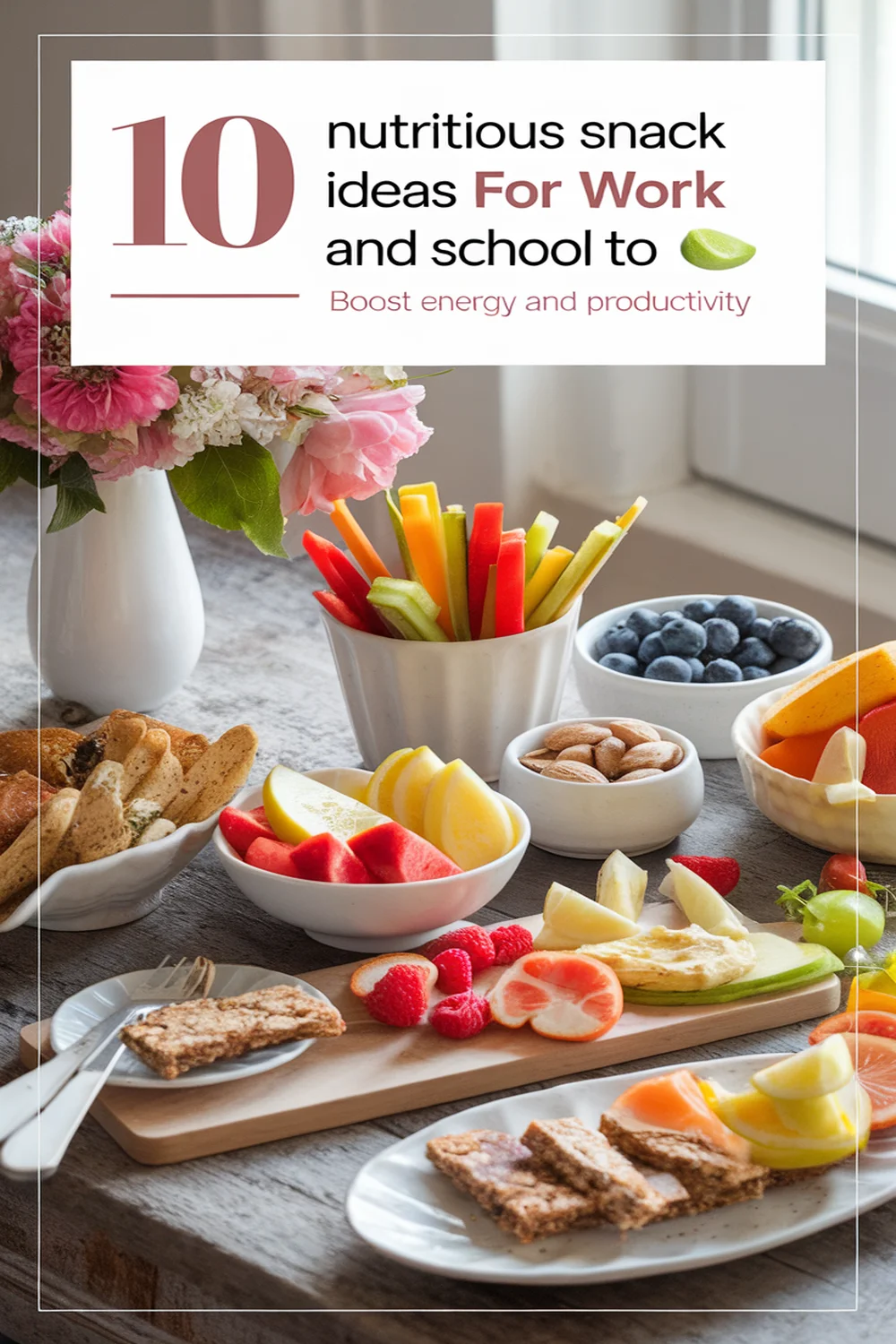This post may contain affiliate links. Please read our policy page.
If you’re looking for simple French desserts perfect for beginners, try your hand at crème brûlée, with its creamy custard and caramelized sugar top, or whip up a rich chocolate mousse that’s easy yet decadent. Tarte Tatin, made with caramelized apples, and light madeleines are delightful options too. Don’t miss profiteroles, éclairs, panna cotta, canelés, and macarons that might seem challenging but are achievable. Stay with us to discover more about each tempting treat.
Crème Brûlée
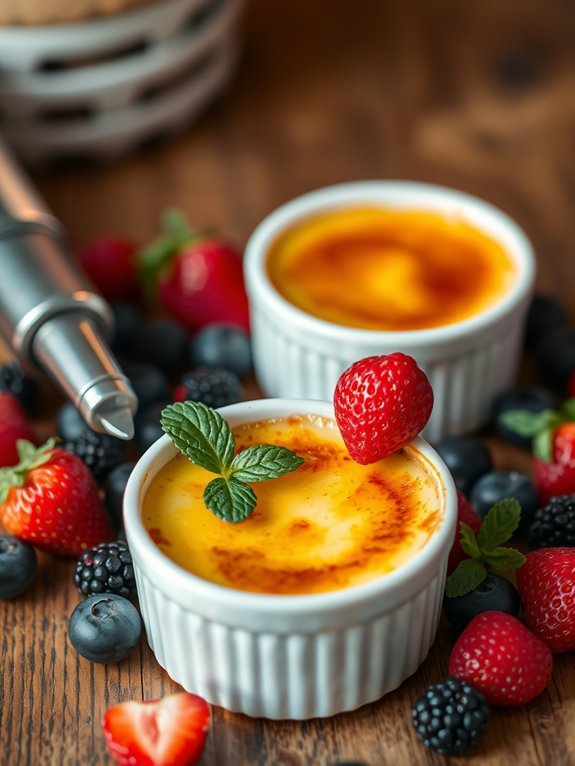
Crème brûlée is a classic French dessert known for its smooth, creamy custard base and the delightfully crisp, caramelized sugar topping. This elegant dish is surprisingly simple to make, making it an excellent choice for both beginner and experienced home cooks.
Traditionally flavored with vanilla, crème brûlée can be customized by infusing other flavors, but the classic version remains a favorite for its rich taste and satisfying texture.
The technique for making crème brûlée involves gently baking the custard mixture in a water bath, allowing for even cooking while maintaining a velvety consistency. The final touch is the caramelized sugar layer, achieved by either using a kitchen torch or broiling in the oven. With its balance of flavors and textures, crème brûlée is sure to impress any dinner guest or provide a well-deserved treat for yourself.
- 2 cups heavy cream
- 1 vanilla bean (or 1 tablespoon vanilla extract)
- 5 large egg yolks
- 1/2 cup granulated sugar (plus additional for topping)
- A pinch of salt
Preheat your oven to 325°F (163°C). In a saucepan, heat the heavy cream and split vanilla bean (if using) over medium heat until it just begins to simmer, then remove from heat and let it infuse for about 15 minutes.
In a bowl, whisk together the egg yolks, sugar, and salt until well combined. Gradually whisk in the warm cream mixture, making sure to remove the vanilla bean if used. Strain the mixture through a fine-mesh sieve into ramekins placed in a baking dish, then carefully pour boiling water into the dish, filling it halfway up the sides of the ramekins.
Bake for about 30-35 minutes, or until the custards are set but still slightly jiggly in the center. Allow to cool, then refrigerate for at least two hours before caramelizing the sugar on top.
When preparing crème brûlée, verify that you let the custards cool completely before adding the sugar topping; this will prevent it from melting into the custard as you caramelize it.
Use a good-quality kitchen torch for the perfect crisp layer of sugar—if you don’t have one, you can also place them under the broiler in the oven for a short time while watching closely to avoid burning. For added flair, consider garnishing with fresh berries or a sprig of mint just before serving.
Chocolate Mousse
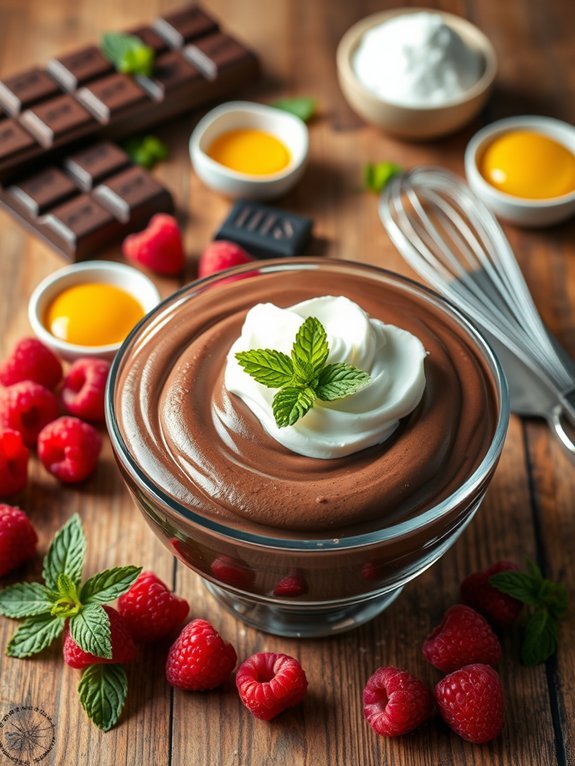
Chocolate mousse is a classic French dessert that’s both rich and indulgent, yet surprisingly easy to prepare. Made primarily from chocolate, eggs, and cream, this dessert delivers a velvety texture and a deep chocolate flavor that can satisfy any sweet tooth. With just a few simple steps, even beginners can master this elegant treat and impress their friends and family.
The beauty of chocolate mousse lies in its versatility; you can enjoy it in individual servings, serve it in a large dish for all to share, or even add flavors like orange zest or a hint of espresso for a delightful twist.
Whether you serve it during a fancy dinner party or as a cozy dessert at home, this chocolate mousse recipe is bound to become a favorite.
Ingredients:
- 200g dark chocolate (around 70% cocoa)
- 3 large eggs, separated
- 50g granulated sugar
- 1 cup heavy cream
- Pinch of salt
- Optional: vanilla extract or other flavorings
To prepare the chocolate mousse, begin by melting the dark chocolate in a heatproof bowl over a pot of simmering water, stirring occasionally until smooth. Once melted, let it cool slightly.
In a separate bowl, beat the egg yolks with the sugar until pale and creamy, then mix in the melted chocolate. In another bowl, whip the heavy cream until soft peaks form.
Next, in yet another bowl, whisk the egg whites with a pinch of salt until stiff peaks form. Gently fold the whipped cream into the chocolate mixture, followed by the egg whites, being careful not to deflate the mixture.
Once combined, spoon the mousse into serving dishes and refrigerate for at least two hours before serving.
For the best results, use high-quality dark chocolate to guarantee rich flavor. Be sure to let the melted chocolate cool slightly before adding it to the egg yolk mixture to prevent cooking the eggs.
If you wish to incorporate additional flavors, do so sparingly, as the chocolate flavor should be the star of the dessert. Finally, serve your mousse with a dollop of whipped cream or fresh berries for a beautiful presentation.
Tarte Tatin
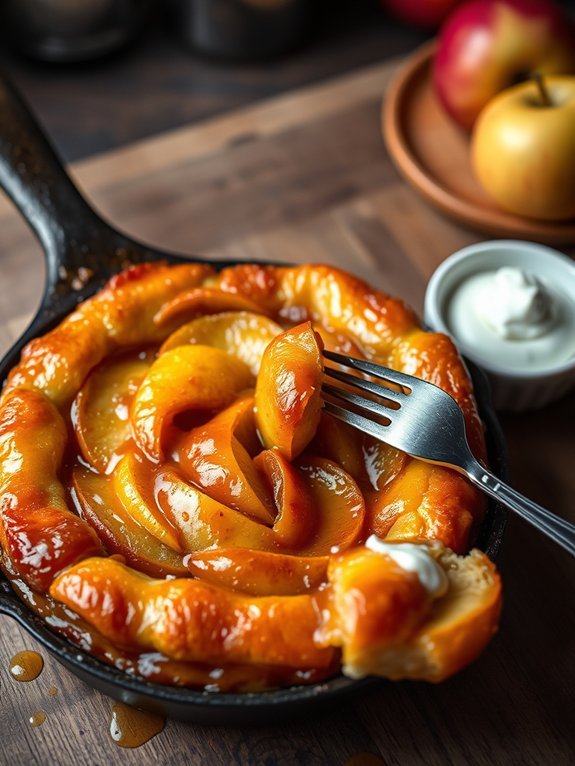
Tarte Tatin is a classic French dessert that perfectly balances the caramelization of apples with the buttery goodness of pastry. This delightful upside-down tart hails from the town of Lamotte-Beuvron, where it was reportedly created by accident in the late 19th century. The story goes that one of the Tatin sisters served an apple tart that had been cooked upside down, and the rest is culinary history.
The beauty of Tarte Tatin lies in its simplicity, making it an excellent choice for beginner bakers who want to impress friends and family with a touch of French flair.
To prepare Tarte Tatin, it’s crucial to choose the right apples, ideally ones that hold their shape well during cooking, such as Granny Smith or Honeycrisp. The tart is typically baked in a skillet, allowing the apples to caramelize while the pastry cooks. The result is a wonderfully gooey and rich dessert that’s best served warm, accompanied by a dollop of crème fraîche or a scoop of vanilla ice cream.
Ingredients:
- 4 to 6 medium-sized apples (Granny Smith or Honeycrisp)
- 100g (1/2 cup) unsalted butter
- 150g (3/4 cup) granulated sugar
- 1 sheet of puff pastry (store-bought or homemade)
- 1 teaspoon vanilla extract
- Juice of 1/2 lemon
- Pinch of salt
Start by preheating your oven to 190°C (375°F). Peel, core, and slice the apples into halves or quarters, making sure they’re of even size. In a heavy, oven-safe skillet, melt the butter over medium heat and add the sugar, stirring until it forms a golden caramel.
Add the sliced apples to the skillet and cook for around 15-20 minutes, turning them gently to coat in the caramel. Once they’re tender and beginning to brown, sprinkle with lemon juice and vanilla extract, then lay the puff pastry on top, tucking the edges down into the skillet.
Transfer the skillet to the oven and bake for about 25 minutes, or until the pastry is golden and puffed. Remove from the oven and let it cool slightly before inverting onto a serving plate.
When making Tarte Tatin, a few important tips can elevate your dessert. First, don’t rush the caramelization process; taking your time guarantees a rich flavor.
Second, make sure to arrange the apples tightly in the skillet since they’ll shrink as they cook. Finally, let the tart rest for a few minutes after baking to allow the caramel to thicken slightly before serving, creating a more cohesive texture and flavor.
Enjoy this classic dessert with a touch of vanilla ice cream or whipped cream for an indulgent treat!
Recommended Items
Get ready to whip up some delightful French treats with these must-have ingredients and tools!
Madeleines

Madeleines are classic French sponge cakes that have a distinctive shell-like shape, achieved by using a special madeleine pan. These delightful little cakes are perfectly light and delicate, with a buttery flavor and a hint of lemon or almond. Traditionally served alongside a cup of tea or coffee, madeleines are surprisingly easy to make, even for beginners.
Once you get the hang of it, you can experiment with different flavorings and additions to create your own variations.
The key to a perfect madeleine is a well-prepared batter and the right temperature for baking. The batter is simple to mix, but it does benefit from a little rest in the fridge to help achieve that lovely dome shape when baked. As you plunge into this recipe, you’ll find that these charming treats aren’t only delicious but also a joy to create in your own kitchen.
- 1 cup all-purpose flour
- 1/2 teaspoon baking powder
- 1/4 teaspoon salt
- 1/2 cup unsalted butter, melted and cooled
- 3/4 cup granulated sugar
- 2 large eggs
- 1 teaspoon vanilla extract
- Zest of 1 lemon (optional for flavor)
- Powdered sugar (for dusting)
In a bowl, whisk together the flour, baking powder, and salt; set aside. In another bowl, beat the eggs and sugar together until pale and fluffy. Gradually add the melted butter and vanilla extract (plus lemon zest if using), mixing until combined.
Fold the flour mixture into the wet ingredients with a spatula until just incorporated. Cover the batter and refrigerate for at least 30 minutes. Preheat your oven to 375°F (190°C) and grease your madeleine pan.
Spoon the batter into each mold, filling them about 3/4 full. Bake for 10-12 minutes until golden and a toothpick comes out clean. Allow them to cool slightly before gently removing them from the pan.
For perfect madeleines, make sure to let your batter rest in the fridge before baking; this will help you achieve that beautiful, characteristic bump. Bake them until they’re just golden, as overbaking can lead to dry cakes.
If you want to amp up the flavor, consider adding a little almond extract or attending more citrus zest for a lively twist. Finally, don’t forget to dust them lightly with powdered sugar once cooled for that final touch of elegance!
Profiteroles

Profiteroles are delightful cream-filled pastries that are a staple of French desserts. Made from choux pastry, these little puffs are light, airy, and versatile. The beauty of profiteroles lies in their ability to be filled with various creams such as whipped cream, pastry cream, or even ice cream, making them perfect for any occasion. Topped with a rich chocolate sauce or left plain, they provide a luscious treat that intrigues dessert lovers of all ages.
Making profiteroles may seem intimidating, but it’s quite simple once you have the right technique. The key ingredient is choux pastry, which is made by cooking butter, water, flour, and eggs to create a dough that puffs up beautifully when baked. With a little practice, you’ll master this recipe and be able to impress family and friends with your own homemade profiteroles.
Ingredients:
- 1 cup water
- 1/2 cup unsalted butter
- 1 cup all-purpose flour
- 1/4 teaspoon salt
- 4 large eggs
- 1 cup heavy cream (for filling)
- 2 tablespoons powdered sugar (for filling)
- 1 teaspoon vanilla extract (for filling)
- 1 cup semi-sweet chocolate chips (for sauce)
- 1/2 cup heavy cream (for sauce)
Preheat your oven to 375°F (190°C).
In a saucepan over medium heat, combine the water and butter. Once the butter has melted completely, add the flour and salt, stirring vigorously until a dough forms and pulls away from the sides of the pan. Remove from heat and let cool for a few minutes.
Add the eggs one at a time, mixing until the dough is smooth and glossy. Transfer the dough to a piping bag and pipe small mounds onto a baking sheet lined with parchment paper. Bake for about 25-30 minutes, or until golden brown.
Meanwhile, whip together the heavy cream, powdered sugar, and vanilla extract for the filling. Once the profiteroles have cooled, pipe the cream into each pastry.
For the chocolate sauce, heat the chocolate chips and heavy cream together until smooth, then drizzle over the filled profiteroles.
When making profiteroles, it’s important to confirm that your dough is well-mixed and smooth for best puffiness. Always allow the pastries to cool before filling them, as this prevents the filling from melting.
Experiment with different fillings and toppings to customize your profiteroles; they can be made decadent with rich chocolate or light and airy with fruit-infused creams. Enjoy the process of creation, and don’t hesitate to make these delightful treats for yourself or your loved ones!
Clafoutis
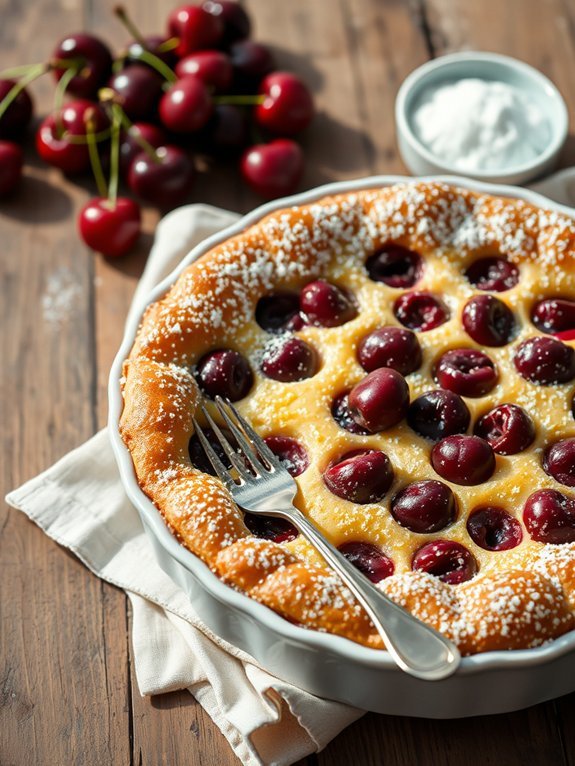
Clafoutis is a delightful French dessert that combines the sumptuousness of a custard with the sweetness of fruit, making it a perfect treat for any occasion. Traditionally made with black cherries, this dessert can be easily adapted to feature a variety of fruits, such as plums, berries, or even apples. The beauty of clafoutis lies in its simplicity, requiring minimal ingredients and not much fuss, making it an ideal recipe for beginners looking to dip their toes into the world of French cuisine.
Preparing clafoutis isn’t only straightforward but also a wonderful way to impress guests or enjoy a comforting dessert at home. The blend of creamy batter and tender fruit creates a soft, cake-like texture that’s both satisfying and delicious. Serve it warm or at room temperature with a dusting of powdered sugar, and your dessert will surely be the star of the meal.
Ingredients:
- 2 cups of fresh cherries (or any preferred fruit)
- 3 large eggs
- 1 cup of milk
- 1 cup of all-purpose flour
- 1/2 cup of granulated sugar
- 1 teaspoon of vanilla extract
- 1/4 teaspoon of salt
- 2 tablespoons of unsalted butter (for greasing the baking dish)
Preheat your oven to 350°F (175°C). Grease a 9-inch round baking dish with butter. Place the cleaned and pitted fruit into the dish, distributing it evenly.
In a mixing bowl, whisk together the eggs, milk, flour, sugar, vanilla extract, and salt until smooth. Pour the batter over the fruit and bake for about 35-40 minutes, or until the clafoutis is puffed and golden, and a toothpick comes out clean from the center. Allow it to cool slightly before serving.
When preparing clafoutis, make certain not to overmix the batter; a few lumps are perfectly fine. For a richer flavor, you can add a splash of almond extract alongside the vanilla or even a sprinkle of nutmeg or cinnamon for added warmth.
If using frozen fruits, there’s no need to thaw them; just add them directly to the baking dish for a quick dessert that captures the essence of fresh fruit. Remember to adjust the sugar depending on the sweetness of your chosen fruit!
Step-by-Step Cooking Guide
Éclairs

Éclairs are a classic French pastry that many budding bakers dream of mastering. These delightful treats consist of a light and airy choux pastry filled with rich pastry cream and topped with glossy chocolate ganache. Although the process may seem intimidating at first, with a little patience and practice, you can create these elegant desserts at home.
Once you’ve mastered the technique, you can experiment with various fillings and toppings to suit your taste.
To make éclairs, you’ll start by preparing your choux pastry, which is a simple mixture of flour, water, butter, and eggs. This unique dough puffs up beautifully in the oven, creating a hollow shell that can be filled with your choice of cream or custard.
The combination of the crispy exterior and the creamy filling makes éclairs an unforgettable treat perfect for any occasion, from casual gatherings to elegant desserts at a dinner party.
Ingredients:
- 1 cup water
- 1/2 cup unsalted butter
- 1 cup all-purpose flour
- 4 large eggs
- 1/4 teaspoon salt
- 1 cup pastry cream (vanilla or chocolate)
- 1 cup heavy cream
- 8 ounces semi-sweet chocolate
- 1 tablespoon vegetable oil
For cooking instructions, begin by preheating your oven to 425°F (220°C). In a saucepan, combine water, unsalted butter, and salt, bringing it to a boil.
Once boiling, remove from heat and stir in the flour until the mixture forms a smooth ball. Return to low heat for 1-2 minutes, allowing the dough to dry out slightly. Transfer the dough to a mixing bowl and allow it to cool a bit before adding in the eggs one at a time, fully incorporating each one before adding the next.
Place the choux pastry in a piping bag and pipe long shapes onto a baking sheet lined with parchment paper. Bake for 20-25 minutes or until golden and puffed. Once cool, fill each éclair with the pastry cream and dip the tops in a ganache made by melting chocolate and blending in some vegetable oil for shine.
For the best results, make sure your choux pastry is light and airy by not opening the oven door during baking, as this can cause them to deflate.
When filling your éclairs, you can poke a small hole in one end to insert the pastry cream or use a piping tip for a cleaner finish.
If you’re feeling adventurous, consider adding flavored creams or toppings, such as whipped cream or fruit, for a unique twist on this traditional dessert. Enjoy the process, and don’t hesitate to experiment!
Panna Cotta
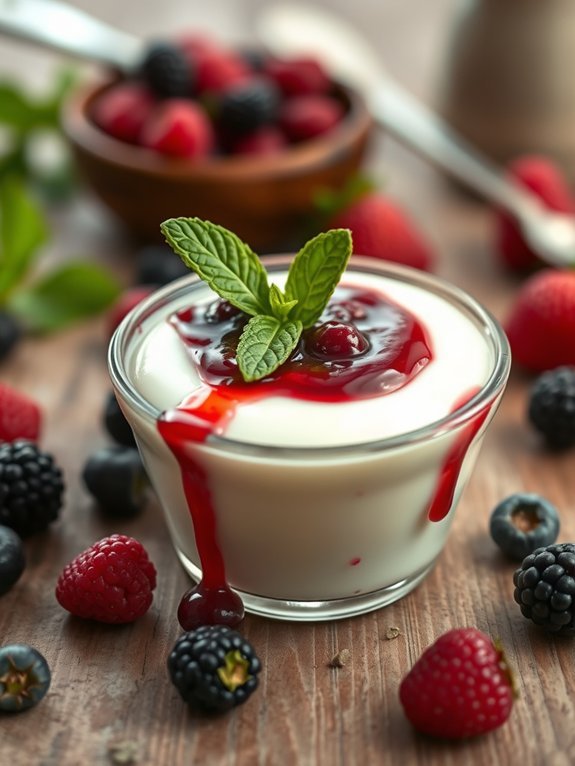
Panna Cotta, which translates to “cooked cream,” is an indulgent Italian dessert that has become a favorite in French cuisine as well. With its silky texture and delicate flavor, panna cotta is surprisingly simple to make, making it the perfect choice for beginners looking to impress at dinner parties or family gatherings.
Originating from the Piedmont region of Italy, this luscious dessert is typically flavored with vanilla and topped with a fruit compote or caramel sauce, making it a versatile option that can be customized to suit the season or your preference.
This delightful treat requires minimal ingredients and no baking, allowing you to concentrate on perfecting the texture. The combination of cream, sugar, and gelatin creates a smooth custard-like consistency that’s both rich and satisfying.
Once mastered, you can experiment with various flavors or toppings, taking your panna cotta from classic to adventurous in no time.
- 2 cups heavy cream
- 1/2 cup granulated sugar
- 1 teaspoon vanilla extract
- 2 teaspoons powdered gelatin
- 3 tablespoons cold water
- Pinch of salt
In a saucepan over medium heat, combine the heavy cream, granulated sugar, vanilla extract, and salt, stirring gently until the sugar dissolves and the mixture is hot but not boiling.
In a separate bowl, sprinkle the powdered gelatin over the cold water and let it sit for 5 minutes to bloom. Once bloomed, add the gelatin mixture to the warm cream mixture, stirring until fully dissolved.
Pour the mixture into ramekins or cups and refrigerate for at least 4 hours or until set.
When making panna cotta, it’s crucial to ascertain that you dissolve the gelatin completely in the warm mixture; if any clumps remain, they’ll affect the final texture.
To easily unmold the panna cotta, lightly run a knife around the edges and briefly dip the ramekins in warm water before inverting onto a plate.
Feel free to get creative with toppings—fresh berries, chocolate sauce, or a citrus coulis can elevate your dessert to new heights.
Canelés
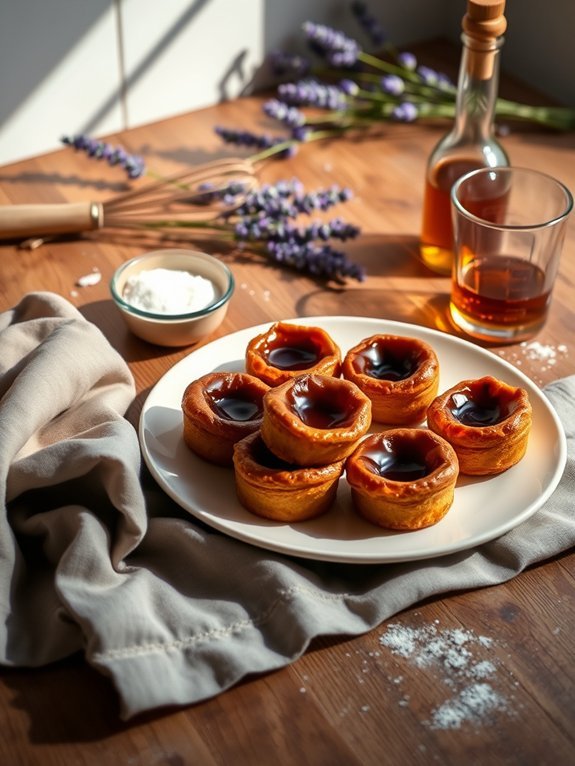
Canelés are delightful French desserts hailing from the Bordeaux region, known for their enchanting caramelized crust and soft, custard-like center. These small, cylinder-shaped pastries often boast a rich vanilla flavor, complemented by the hint of rum. Although they may seem intimidating at first, the process of making canelés is surprisingly straightforward, making them an excellent choice for beginner bakers keen to explore French confections.
To achieve the perfect canelé, one must focus on achieving the right balance between the exterior and interior textures. The traditional method involves using copper molds which contribute to the characteristic crust and allow for even baking. With a few essential ingredients and some patience, you can impress your friends and family with these delightful treats that embody the essence of French baking.
Ingredients:
- 2 cups whole milk
- 1 tablespoon unsalted butter
- 1 cup granulated sugar
- 1 cup all-purpose flour
- 2 large eggs
- 1 egg yolk
- 1 tablespoon vanilla extract
- 2 tablespoons dark rum
- A pinch of salt
- Butter (for greasing the molds)
To begin, preheat your oven to 425°F (220°C). In a small saucepan, heat the milk and butter over medium heat until just simmering. In a bowl, whisk together the sugar, flour, eggs, egg yolk, vanilla extract, rum, and salt until smooth. Gradually add the warm milk mixture to the egg flour mixture, whisking constantly to avoid curdling.
Strain the batter through a fine sieve into a pouring jug. Allow the batter to rest in the refrigerator for at least 24 hours for the best results. Once rested, thoroughly grease your canelé molds with butter, fill them about ¾ full with the batter, and bake for about 45-50 minutes or until they’ve a dark, caramelized surface.
For the best canelés, make certain your batter rests for a full 24 hours, as this allows the flavors to meld and improves the texture. Additionally, if you don’t have copper molds, silicone molds will work but may yield a slightly different crust.
Keep a close eye on the canelés towards the end of baking; each oven behaves differently, and you want them to have that dark golden exterior without burning. Once they’re out of the oven, let them cool before gently removing them from the molds – they should pop out easily if greased correctly!
Macarons
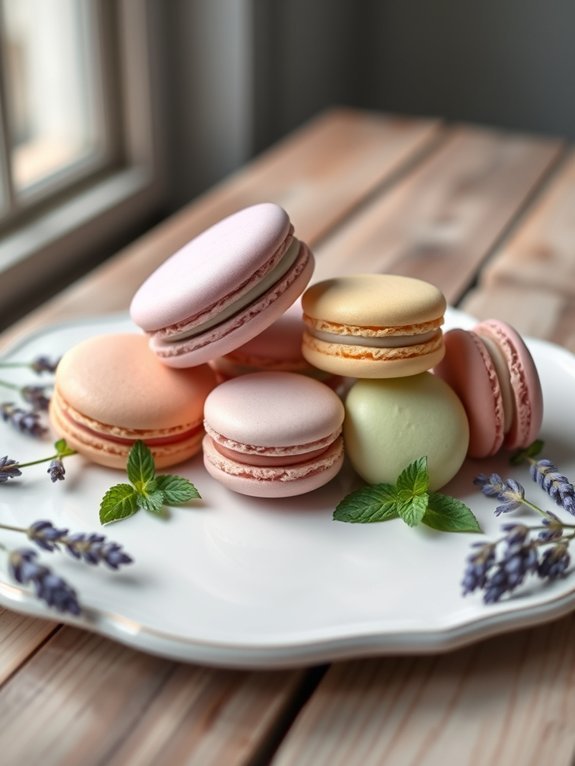
Macarons are elegant French treats known for their delicate, crisp shells and soft, chewy interiors. These colorful confections are made using simple ingredients, yet they require a bit of technique to achieve the perfect texture and flavor. The combination of almond flour and egg whites gives macarons their signature lightness, while a variety of fillings—from buttercream to ganache—can turn these little cookies into an extraordinary dessert experience.
Making macarons might seem intimidating, but it’s an excellent project for beginners who are enthusiastic to explore French pastry. With a little patience and careful attention to detail, you can create beautiful and delicious macarons that are sure to impress friends and family. Gather your ingredients and get ready to commence on a delightful baking adventure!
- 1 cup almond flour
- 1 ¾ cups powdered sugar
- 4 large egg whites (at room temperature)
- ½ cup granulated sugar
- ¼ teaspoon cream of tartar
- Food coloring (optional)
- Filling of choice (buttercream, ganache, jam, etc.)
Start by preheating your oven to 300°F (150°C) and lining two baking sheets with parchment paper. In a medium bowl, sift together almond flour and powdered sugar to confirm a fine mixture.
In a separate bowl, beat the egg whites until frothy, then add cream of tartar and continue to whip until soft peaks form. Gradually add granulated sugar while beating until stiff peaks develop. If using, add a few drops of food coloring to achieve your desired hue.
Gently fold the dry mixture into the whipped egg whites using a spatula until fully combined and the batter has a smooth, flowing consistency. Transfer the batter to a piping bag, pipe small circles onto the prepared baking sheets, and let them rest for about 30 minutes to allow a skin to form.
Bake for 15-20 minutes, let cool, and fill with your favorite filling. To achieve perfect macarons, it’s essential to have your ingredients measured accurately and your equipment properly prepared. Use a kitchen scale for the best precision, and make sure your mixing bowls and utensils are completely free of grease or moisture, as this can affect the egg whites’ ability to whip up properly.
Additionally, letting the piped macarons rest before baking is vital for forming the iconic “feet.” Finally, be patient with the baking time; every oven is different, so keep a close eye on them to avoid over-baking.

